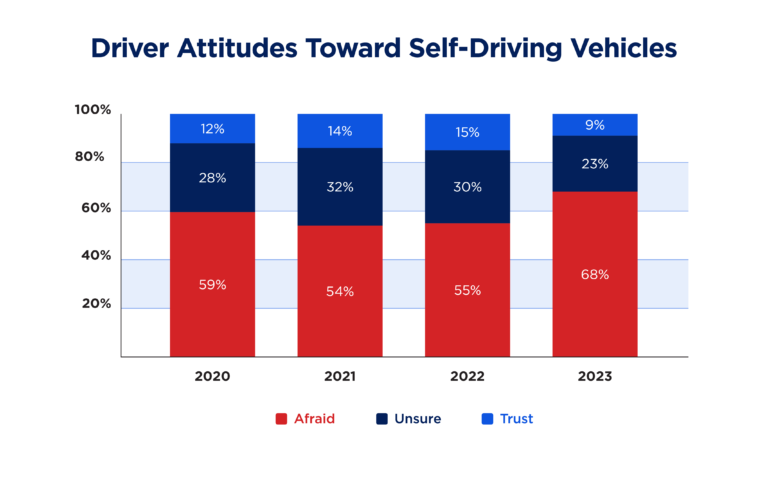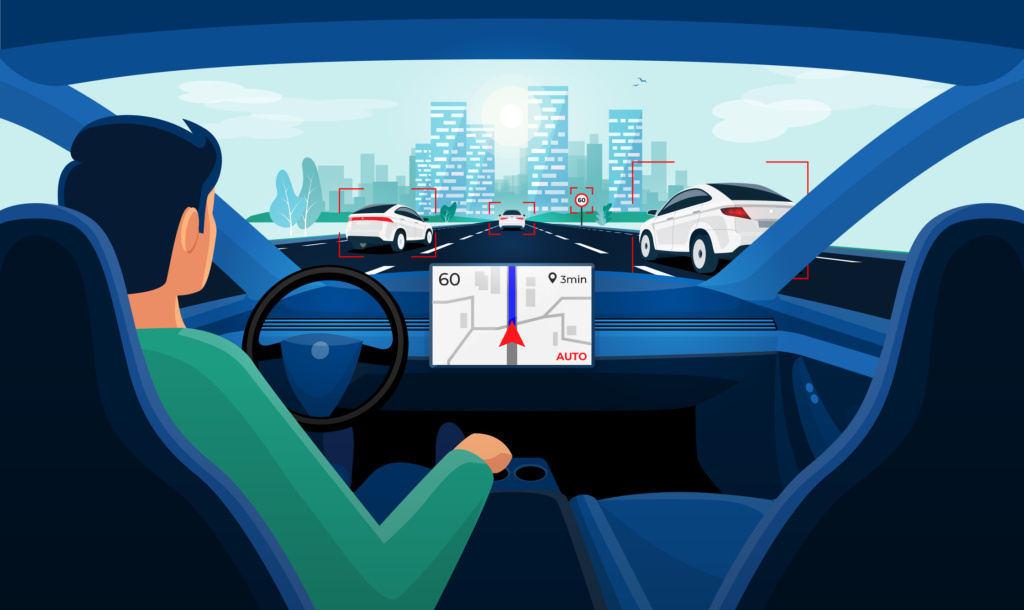68% of drivers are afraid to ride in a car that drives itself – a 13% jump from last year
BOISE – When faced with the prospect of riding in an autonomous vehicle that operates without human help, a growing number of Americans are saying, “Thanks, but no thanks.”
According to a new survey by AAA, 68% of drivers say they would be afraid to ride in a vehicle that drives itself – a 13% increase from a year ago – while 23% are unsure. Just one in ten drivers say they would trust a vehicle to drive itself while they are in it.

While fully self-driving vehicles aren’t currently available for purchase, nearly one in ten drivers mistakenly believe they can buy a vehicle today that would drive itself while they sleep. AAA shares this information with automakers, government officials and the driving public to provide a current snapshot of awareness and attitudes surrounding AV capabilities.
“Recent high-profile crashes may be giving some folks pause about the future of driving, but it’s important to remember that no vehicle on the road today is equipped to take the place of an alert human driver,” says AAA Idaho public affairs director Matthew Conde. “Our hope is that automakers continue to improve existing technologies while rigorously testing AVs for future deployment, with the understanding that the speed of technology should never outpace safety.”
While autonomous vehicles may not be widely available for many years, 60% of drivers say they would “definitely” or “probably” want some form of advanced safety technology in their next car:
- Automatic Emergency Braking (63%)
- Reverse Automatic Emergency Braking (62%)
- Lane Keeping Assistance (58%)
- Adaptive Cruise Control (55%)
- Active Driving Assistance – combines braking, accelerating, and steering through the use of adaptive cruise control and lane keeping assistance (46%)
Based on the names that automakers currently use for their advanced driver assistance systems, such as Autopilot, ProPilot and Pilot Assist, 22% of survey respondents mistakenly believe that these systems can drive without human supervision. For years, AAA has called for standardized technology names that clearly indicate what a system can or cannot do. For more information, see AAA’s resource, Clearing the Confusion.
There are also significant generational differences in attitudes and beliefs surrounding AVs. Millennials (60%) are less likely to be afraid of riding in an autonomous vehicle, compared with 77% of Baby Boomers. But Millennials were also more likely to incorrectly believe that they can currently buy a vehicle that drives itself while they sleep (12%) than Baby Boomers (4%).

Fully autonomous vehicles are classified as Level 5 automation, according to a standard developed by the Society of Automotive Engineers. But the most advanced vehicles on the road today have only achieved Level 2 automation, meaning that if the car encounters a situation that exceeds its operating capabilities, it will immediately turn control back over to the human driver.
“Drivers who are already familiar with Level 2 automation can’t afford to become complacent behind the wheel. It really is a partnership between person and machine,” Conde said. “For those who aren’t as comfortable with the latest technology, incremental exposure will be key to building an appropriate level of confidence and a complete understanding of system limitations.”
AAA urges the federal government to carefully consider how to safely develop, test and deploy autonomous vehicles while ensuring that the driving public has confidence in the technology. When consumers are ready to buy a new car, they should ask the dealer for a full demonstration of how its safety systems work.

